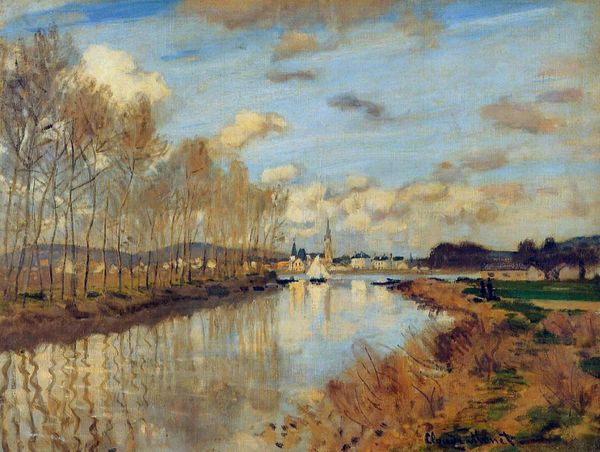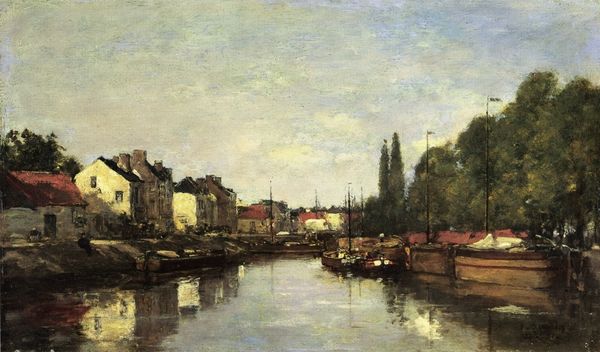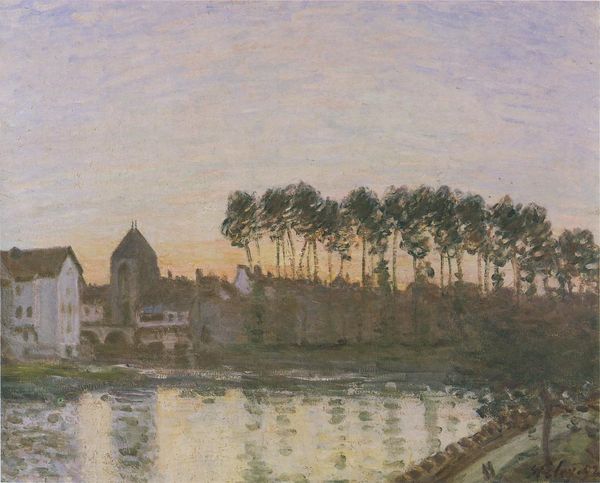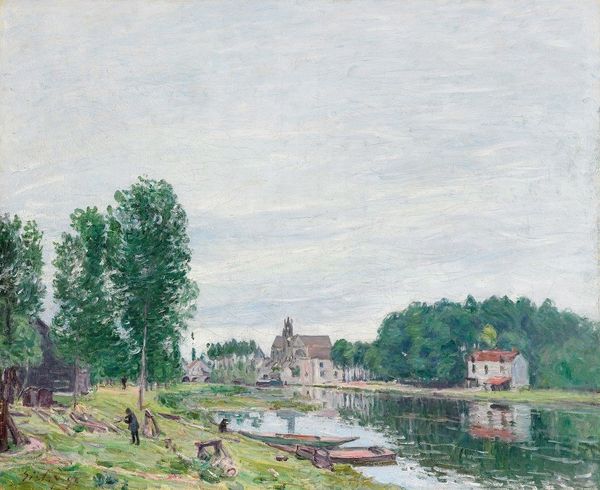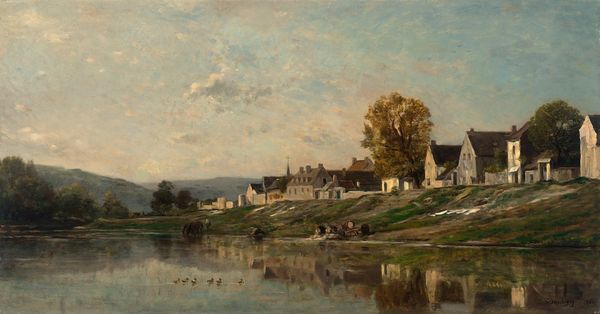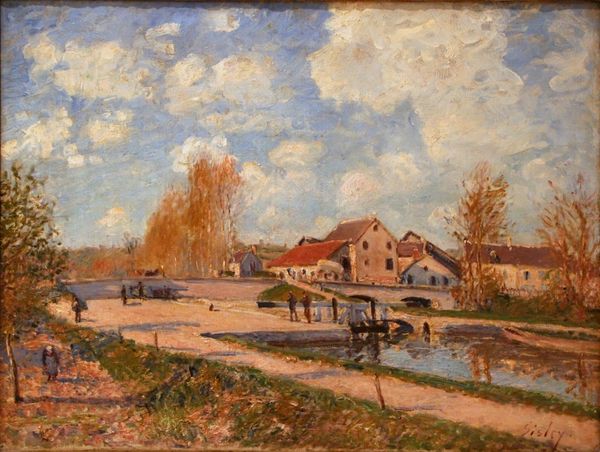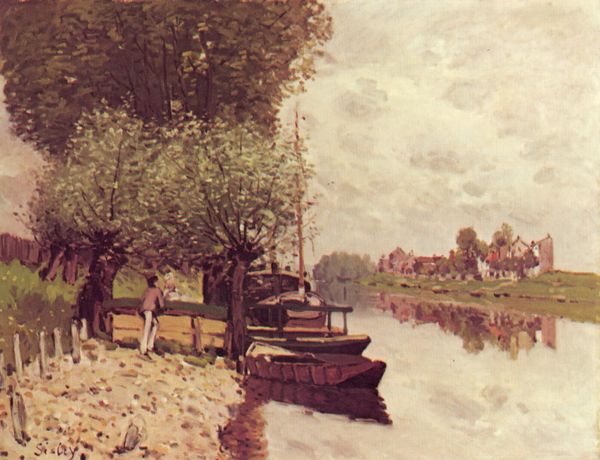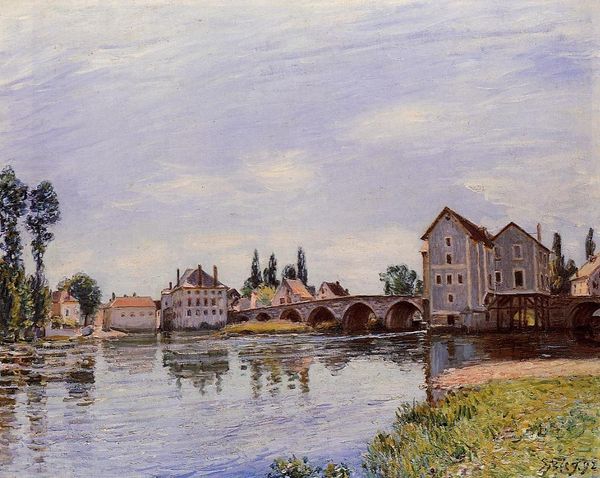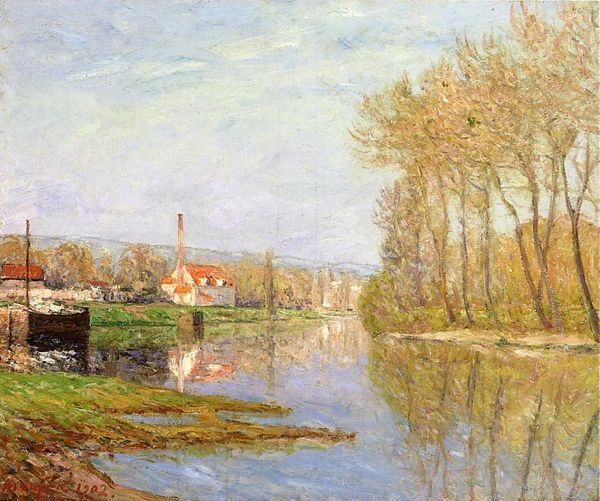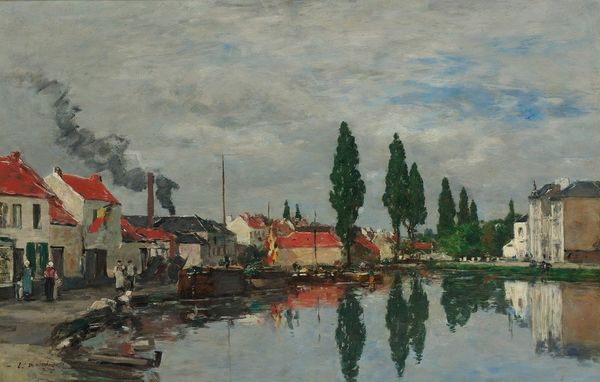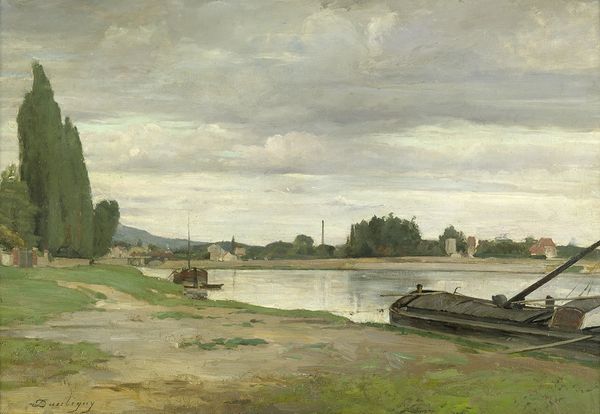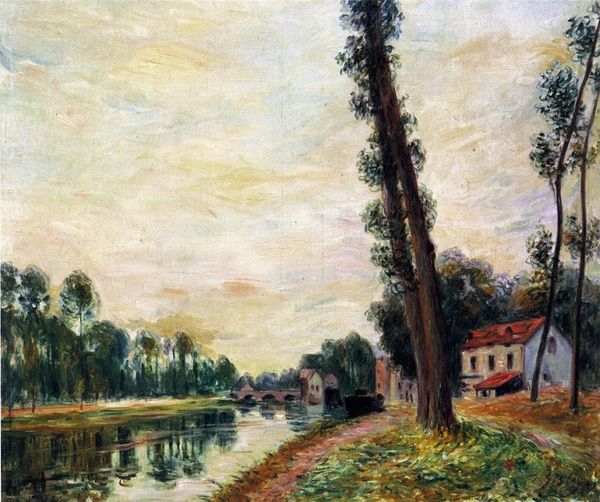
Copyright: Public domain
Curator: Immediately striking. A somewhat somber, contemplative mood, don't you think? Editor: Indeed. We're looking at Claude Monet's "Infantry Guards Wandering along the River," painted around 1870. An oil on canvas, showcasing a river scene with soldiers, a towpath, buildings, and a steamboat in the distance. The artwork really brings the atmosphere to the viewer. Curator: Absolutely. I’m interested in the materiality here. Notice how thickly Monet applies the paint, creating a textured surface, and blurring the line between high art and a kind of crafted record. He uses visible brushstrokes that almost feel like they're building up a topography of labor. And that subdued palette. Very practical! Editor: That muted palette is indicative of its time, I think. France was undergoing rapid industrialization, but also still reeling from social upheaval. This river becomes a space where the military, those symbols of state power, are almost passively observing—wandering, as the title suggests. The steamboat further contributes to the atmosphere as new ways of transit for commercial trades began in Europe. Curator: Exactly! The production of the painting, the act of rendering the social realities of his time…the means are the message! Monet is participating in, and arguably shaping, perceptions of labor and landscape through his own physical engagement with materials. We can explore and feel his painting in person! Editor: And what a painting it is! Beyond materiality, Monet’s artwork reminds us that art is also enmeshed in the historical currents of 19th-century France—reflecting and shaping understandings of duty, industry, and social change, for both audiences and cultural establishments of its time. Curator: So, from the textured brushstrokes to the subject matter, it is a narrative about how we shape and perceive our world through the materials we touch, and with what purpose. Editor: Absolutely. A poignant reminder of the past, made relevant through Monet's unique vision, but more importantly, how society affects the creation of art itself. Thank you.
Comments
No comments
Be the first to comment and join the conversation on the ultimate creative platform.
